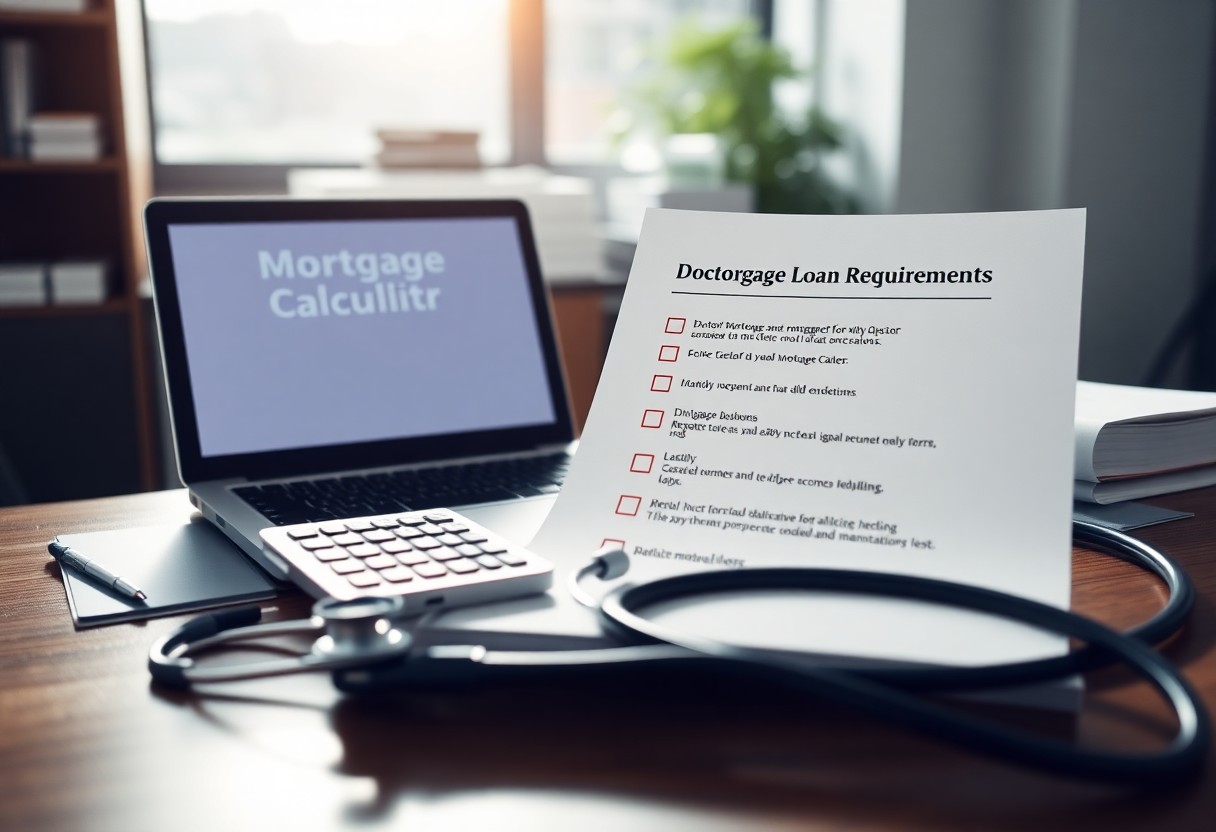Physician home loan programs are tailored to meet your unique financial needs as a medical professional. These specialized loans can help you navigate the home-buying process with ease, offering benefits that traditional loans may not provide. In this comprehensive guide, you will discover how these programs work, explore their advantages, and find tips on how to qualify, ensuring that you make informed decisions for your future. Let’s unlock opportunities for home ownership that align with your career pursuits in medicine.
Decoding Physician Loan Programs: How They Work
Understanding the mechanics of physician loan programs is imperative for navigating your options effectively. These specialized loans cater specifically to the unique financial situations of medical professionals, allowing you to purchase a home with minimal upfront costs. Unlike conventional mortgages, these programs factor in your career trajectory and income potential, thus streamlining the approval process despite possible burdens such as student debt or low credit scores during your residency or fellowship. This tailored approach enables you to invest in your first home sooner than traditional financing might allow.
The Unique Structure of Physician Loans
The architecture of physician loans sets them apart from standard mortgage products. Predominantly, they are designed without requiring a hefty down payment, often as low as 0-5%, and typically avoid private mortgage insurance (PMI), making homeownership more financially accessible. Lenders realize that new doctors may have extensive student loans but strong earning potential ahead, so they adapt their lending criteria to favor your financial future rather than merely your current financial state.
Key Features That Benefit Medical Professionals
Physician loan programs offer a suite of features aimed at maximizing affordability and ease of entry into homeownership. These benefits can facilitate smoother financial transitions onto the property ladder, easing some of the burdens that medical professionals face following extensive education and training. Here are some of the key features:
- No down payment or low down payment options
- No private mortgage insurance (PMI)
- Higher debt-to-income (DTI) ratio allowances
- Flexible underwriting criteria
- Competitive interest rates
Perceiving the unique needs of medical professionals, lenders of physician loan programs have crafted these options to account for your specific financial landscape. Essentially, these features collectively contribute to making homeownership a more attainable reality, even within the first few years of your medical career. This thinking aligns with the understanding that as your career progresses, so too will your earning potential, allowing you to secure your financial future through homeownership sooner rather than later.
The Financial Landscape: Comparing Traditional Mortgages vs. Physician Loans
| Traditional Mortgages | Physician Loans |
| Typically require a higher DTI ratio (up to 43%) | Allow for higher DTI ratios (up to 50%) |
| Usually need a minimum credit score of 620 | May accept credit scores as low as 700 |
| Standard down payment is often 20% | Down payments can be as low as 0-5% |
| Require mortgage insurance if down payment is less than 20% | Often waive mortgage insurance altogether |
Understanding DTI Ratios and Credit Score Requirements
Your debt-to-income (DTI) ratio and credit score play significant roles in mortgage eligibility. Traditional lenders typically cap DTI at about 43%, meaning your total monthly debts should not exceed a certain percentage of your gross income. In contrast, physician loans often allow a DTI ratio as high as 50%. Additionally, while conventional loans generally expect credit scores to be around 620, many physician lenders are more lenient and might accept scores starting at 700, providing you with greater opportunities for financing your home.
Examining Down Payments and Mortgage Insurance Implications
Down payment requirements significantly differ between traditional mortgages and physician loans. When pursuing a standard mortgage, you’ll often encounter a minimum down payment of 20%, which can be a substantial financial hurdle. However, physician loans can provide a considerable advantage by allowing down payments as low as 0-5% without the burden of private mortgage insurance (PMI). This means you can secure your home without straining your finances further with additional monthly fees.
Down payments are a critical component when assessing loan options. Traditional lenders typically require PMI if your down payment is under 20%, which increases your overall monthly expenses. On the other hand, physician loan programs frequently eliminate this requirement, allowing you to redirect those funds toward other expenses or savings. For example, a physician purchasing a $400,000 home with a 5% down payment could save thousands over the lifespan of the loan by avoiding PMI, making homeownership more accessible and manageable during the often financially demanding early years of a medical career.

Beyond the Basics: Navigating Eligibility and Application Processes
Understanding the intricacies of eligibility and application processes is vital to effectively leveraging physician home loan programs. This section investigates into who qualifies for these programs and provides strategies to streamline your application journey. Knowing your eligibility criteria and preparing your documentation will lead to a smoother experience and increase your chances of approval.
Defining Eligible Medical Professionals and Specialties
Eligibility for physician home loan programs typically extends to a variety of medical professionals, including doctors, dentists, and sometimes veterinarians or pharmacists. Generally, you need to be a graduate from an accredited medical school, and in many cases, you must be within a certain time frame of completing your residency. Subspecialties can also be included, so knowing your specific program’s guidelines will ensure you meet their criteria.
Optimization Strategies for a Smooth Application Process
To enhance your application experience, gather all necessary documentation beforehand. This includes pay stubs, tax returns, proof of employment, and residency completion certificates. Additionally, create a checklist to ensure you don’t miss any required elements. Establishing good communication with your lender can clarify any uncertainties and expedite the process. For example, some lenders may require additional information, like a letter of intent for those in fellowship training, so being proactive helps in timely approvals.
Consider reaching out to a mortgage broker experienced in physician loans as they can guide you through the nuances of the application process. Having a dedicated expert can provide insights about specific lenders, helping you choose the best fit for your needs. Furthermore, maintain an organized file with all documentation readily available; not only does this expedite approval, but it also reflects your professionalism, which can positively influence lenders’ perceptions. Aim to submit your application during non-peak times or at the beginning of the month; this can lead to shorter processing times due to lower overall application volume.
Unlocking Hidden Benefits: Navigating Rates, Terms, and Forgiveness Opportunities
Exploring the lesser-known benefits of physician home loan programs offers you the chance to maximize your financial advantage. Competitive interest rates and favorable loan terms can significantly reduce your monthly payments, while forgiveness programs may alleviate the burden of student debt. Understanding these aspects allows you to make informed decisions that align with your long-term financial goals.
Exploring Competitive Interest Rates and Loan Terms
Your access to competitive interest rates in physician loan programs can save you thousands over the life of the loan. Often, these specialized loans feature fixed or adjustable rates that are lower than conventional mortgages, allowing you to secure a more favorable financial footing. Flexible repayment terms, typically ranging from 10 to 30 years, further enhance these loans, ensuring that you can find a plan that fits your budget and lifestyle.
Leveraging Forgiveness Programs and Incentives
Many physician loan programs offer forgiveness opportunities that significantly enhance the affordability of homeownership. Programs linked to specific states or organizations may provide partial or total forgiveness of your student loans after completing certain criteria. These incentives not only ease your financial strain but also encourage you to serve in areas that may lack adequate medical professionals.
For instance, the National Health Service Corps (NHSC) offers loan repayment assistance to healthcare professionals who commit to serving in high-need areas. Participating in similar programs can result in substantial savings, sometimes totaling up to $50,000 or more in loan forgiveness. Additionally, state-sponsored programs often provide local initiatives that support physicians in exchange for a commitment to work in underserved communities. By thoroughly exploring these options, you can turn your initial financial burden into an opportunity for both personal growth and community service.
Real Stories, Real Success: How Physicians Transformed Their Home Buying Experience
Physicians across the country have navigated the home buying landscape with remarkable success through physician loan programs. For instance, Dr. Jane, a recent med school graduate, secured her dream home with minimal down payment, allowing her to allocate savings toward student loan repayment. Similar experiences from Dr. Mike and Dr. Sarah illustrate how tailored loan options not only simplified their buying process but also empowered them to invest in neighborhoods close to work, enhancing their quality of life and financial security.
Lessons Learned from Successful Borrowers
Successful borrowers often highlight the importance of understanding loan details and terms specific to physician loans. Knowledge about how income, credit scores, and debt ratios affect borrowing potential helped them make informed decisions. Additionally, connecting with advisors familiar with medical professionals’ unique financial situations prepared them for the home buying journey, ultimately resulting in more favorable outcomes.
Highlighting Common Pitfalls and How to Avoid Them
Avoiding common pitfalls like focusing solely on interest rates or overlooking the total cost of homeownership can lead to more successful transactions. Physicians often fall into the trap of being swayed by attractive promotional offers without evaluating long-term implications. You can sidestep these missteps by meticulously reviewing all loan terms and conditions, as well as seeking pre-approval from several lenders to ensure you choose the best financing option that aligns with your financial future.
It’s easy to be overwhelmed by the various loan programs available, leading to hasty decisions driven by urgency rather than careful consideration. A common misstep includes neglecting the impact of rising property taxes and insurance rates that compound monthly payments. Educating yourself about additional costs, such as maintenance and HOA fees, can prevent future financial strain. Leverage the advantages of your specialty and seek advice from those who have successfully navigated their home purchase, helping you craft a more strategic approach to your own buying experience.
Summing up
Upon reflecting on the insights provided in “Unlocking Opportunities – A Comprehensive Guide To Physician Home Loan Programs,” you are now equipped with the knowledge to navigate the complex landscape of home financing tailored specifically for your profession. This guide empowers you to leverage unique loan options designed with your needs in mind, from favorable terms to specialized benefits. By understanding these programs, you can confidently pursue home ownership, ensuring that your journey aligns with your professional and personal goals.




